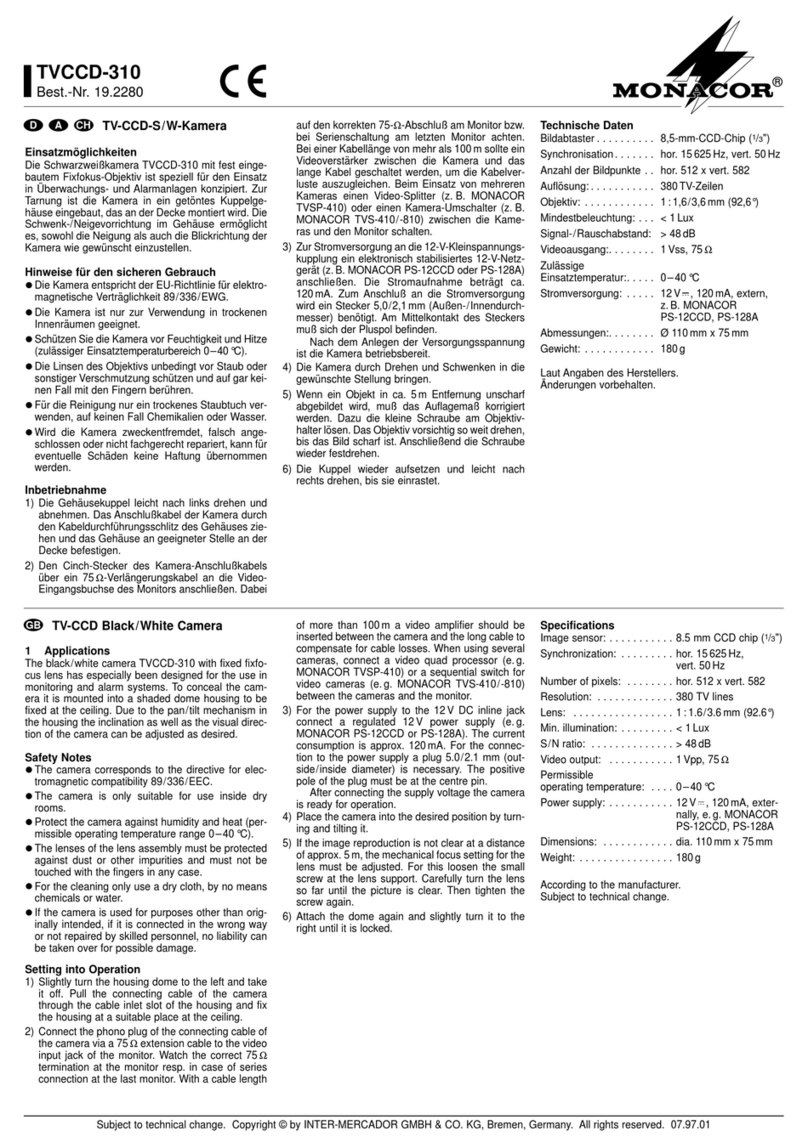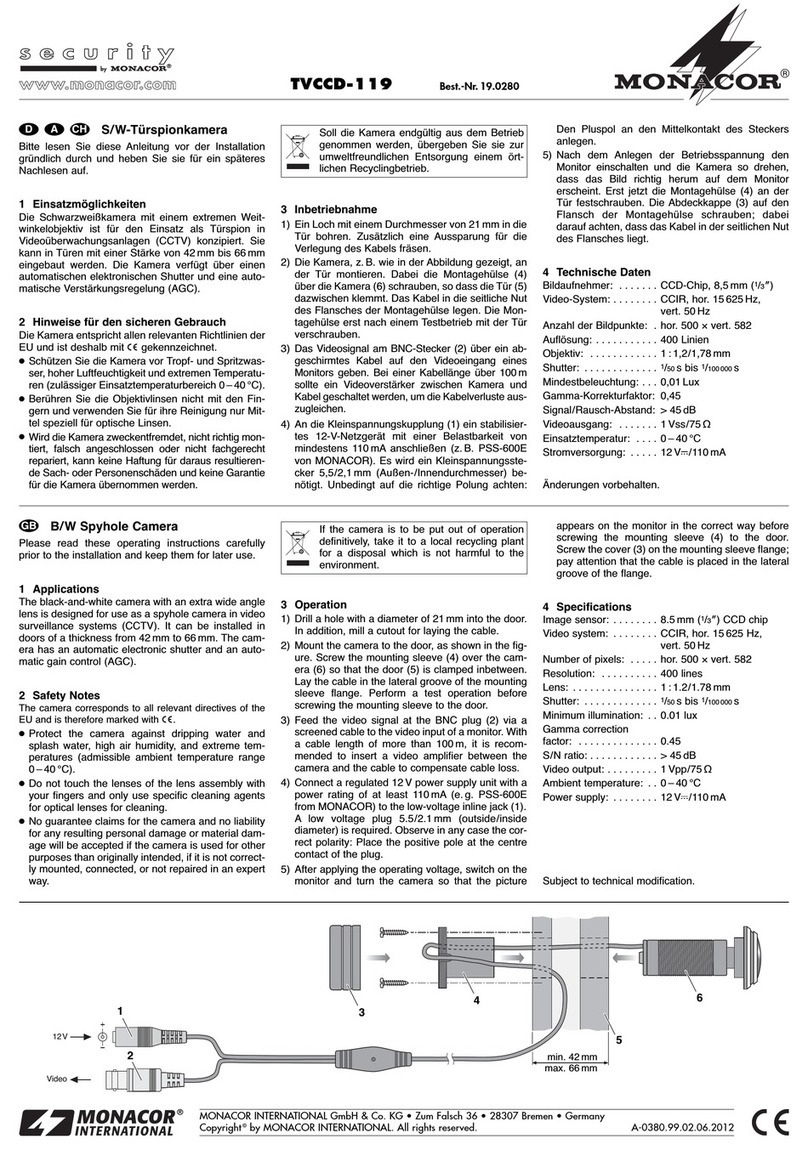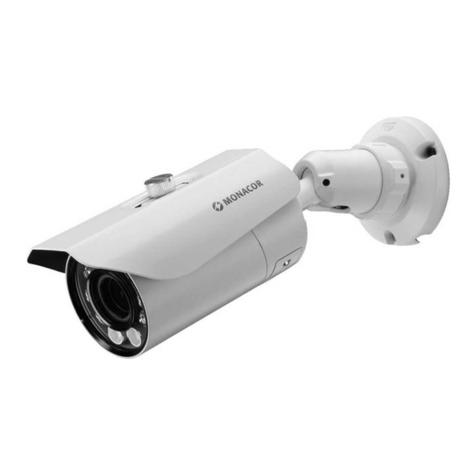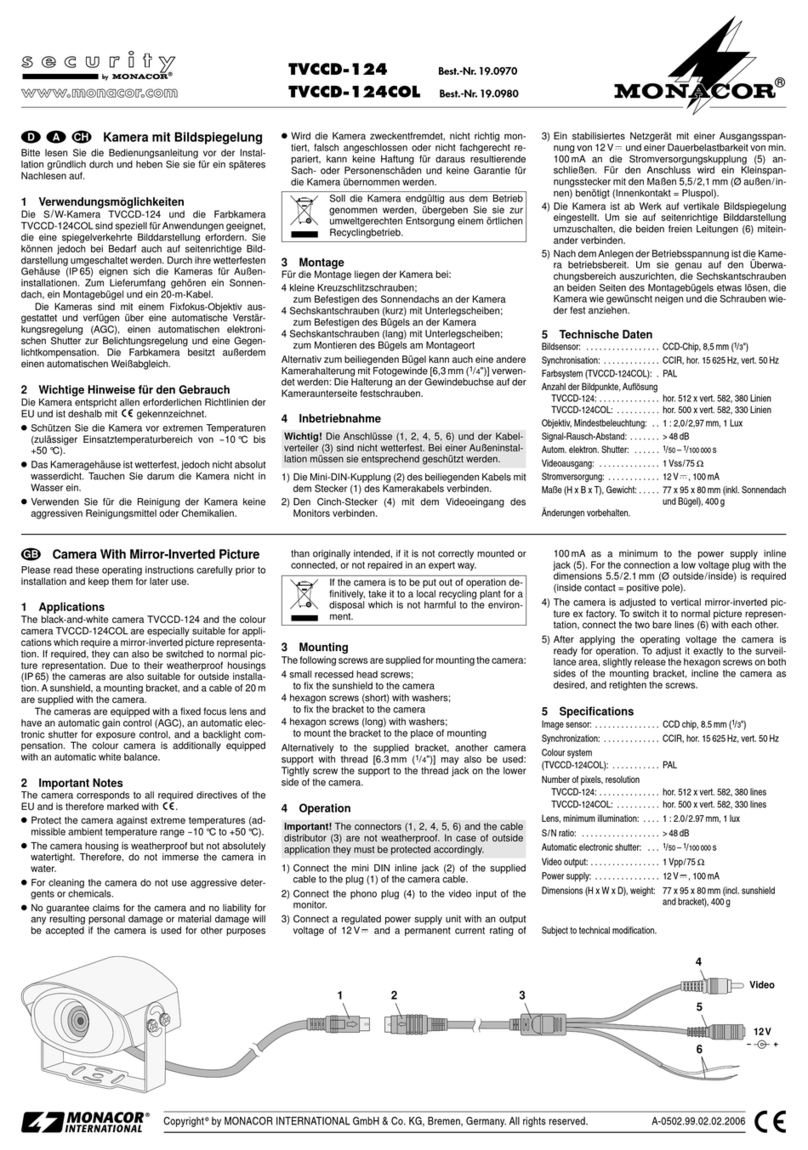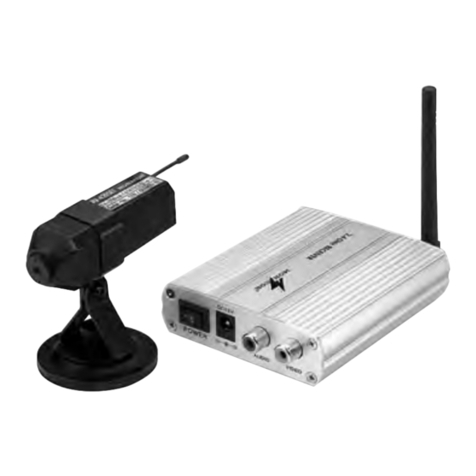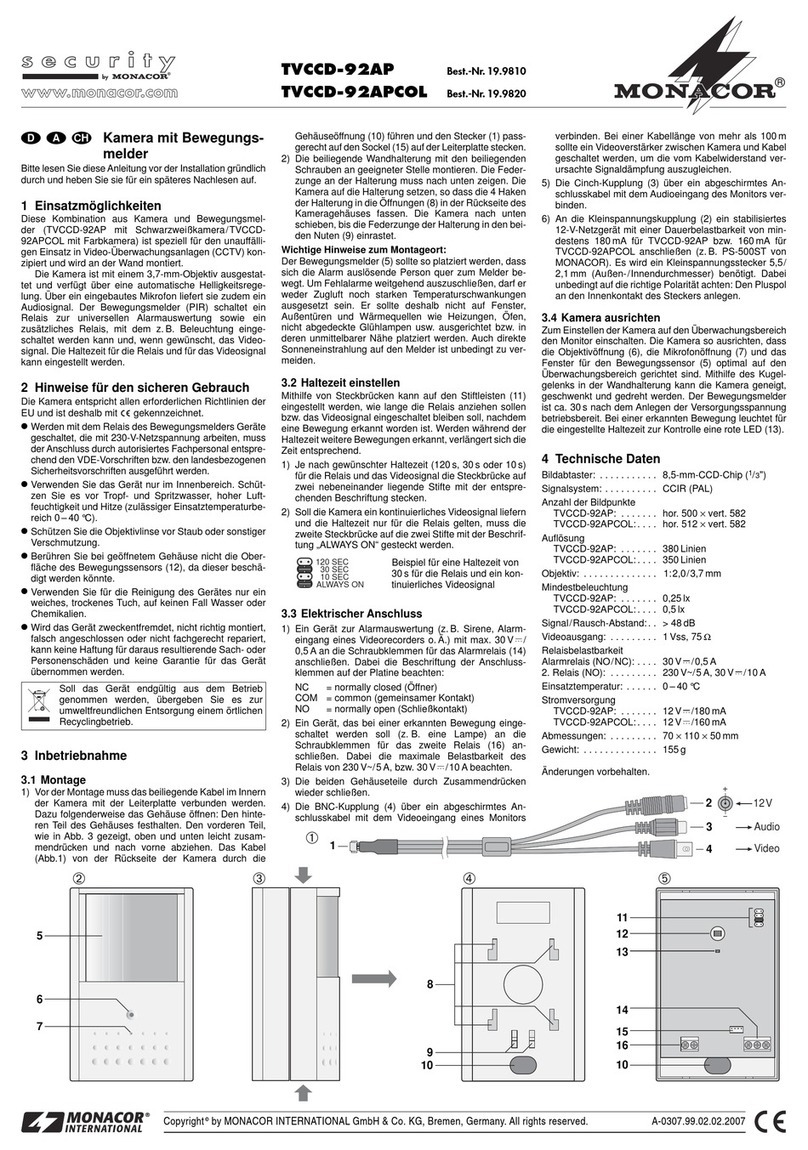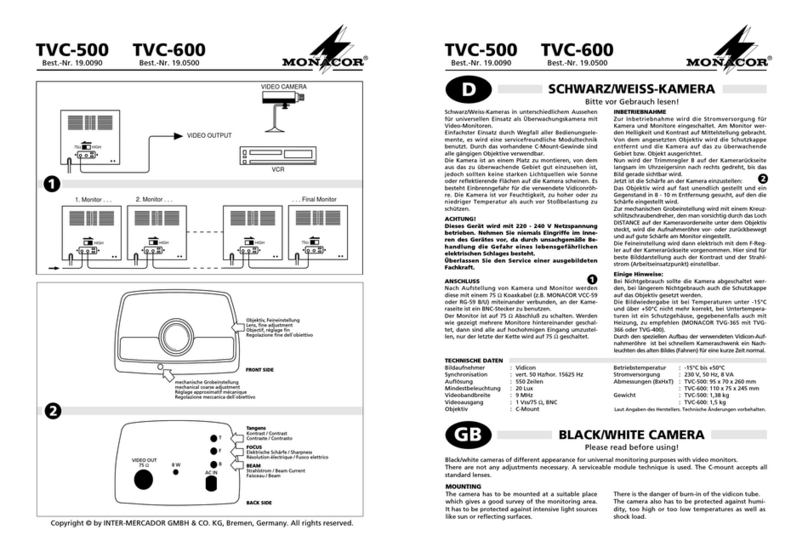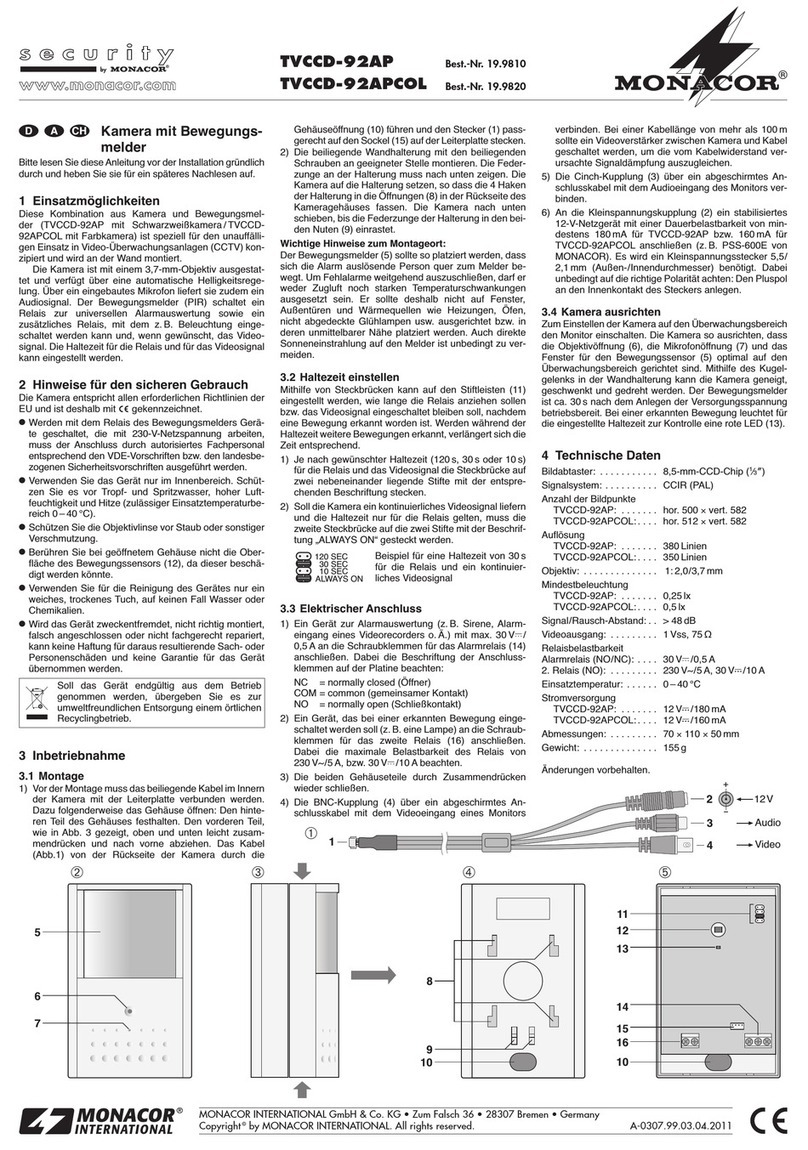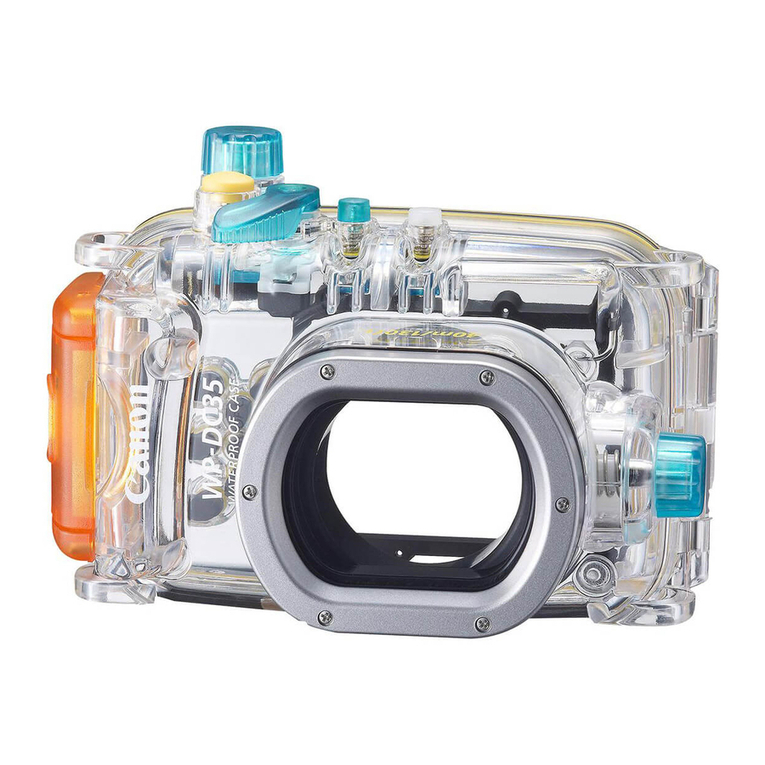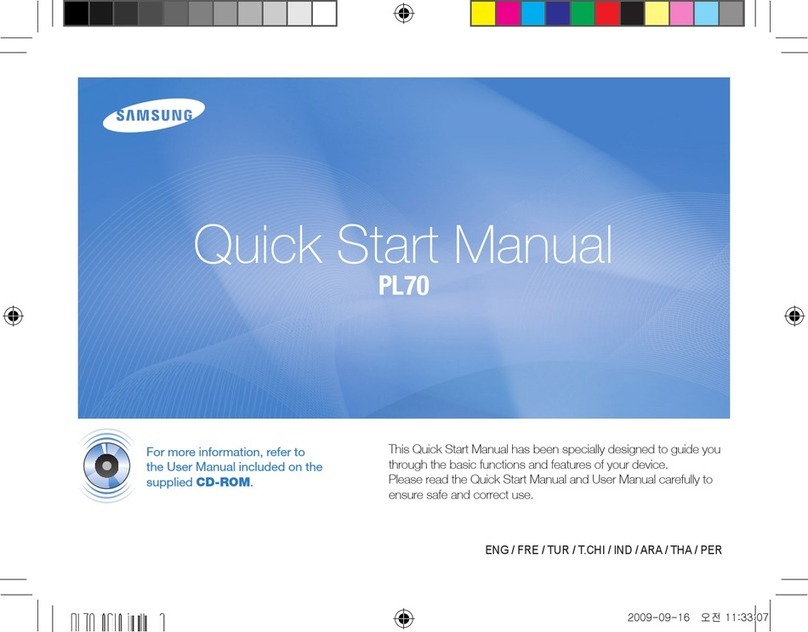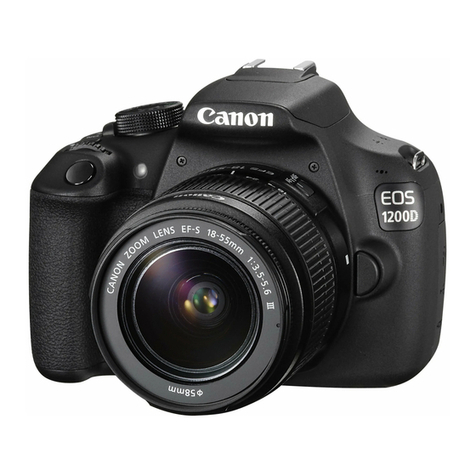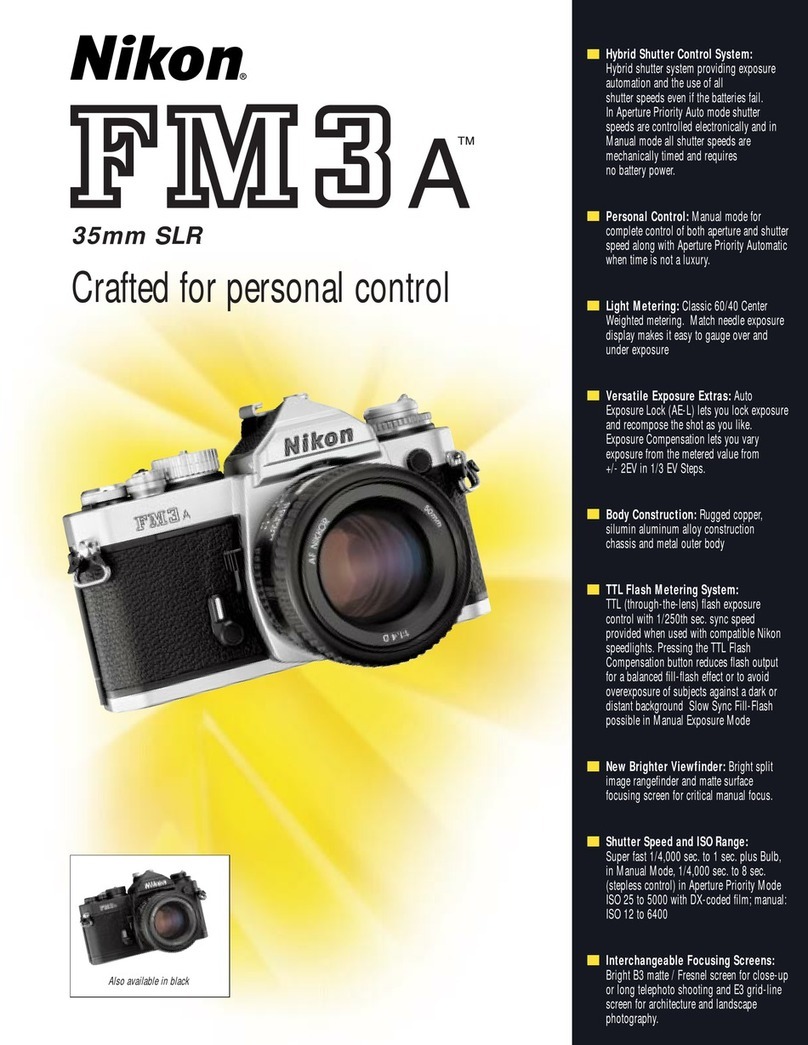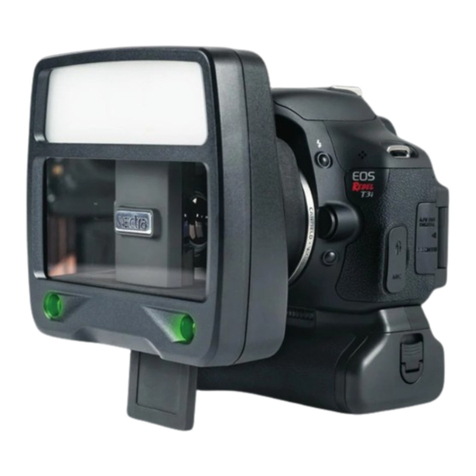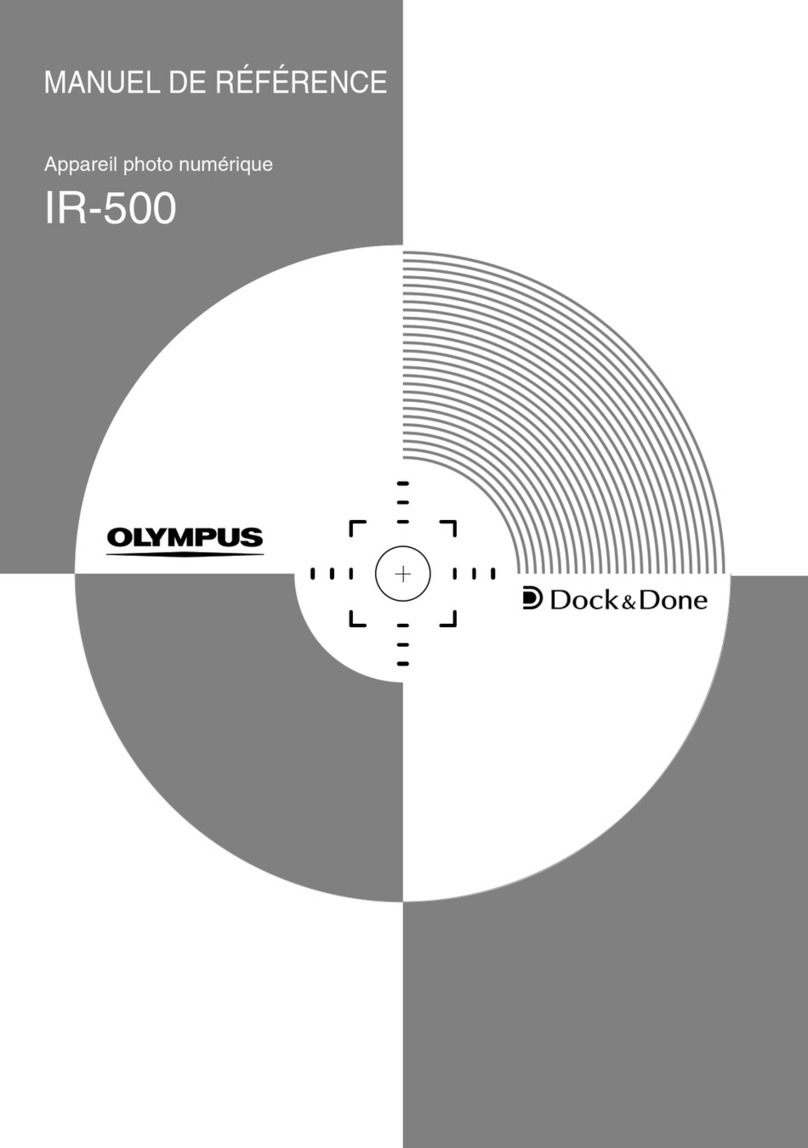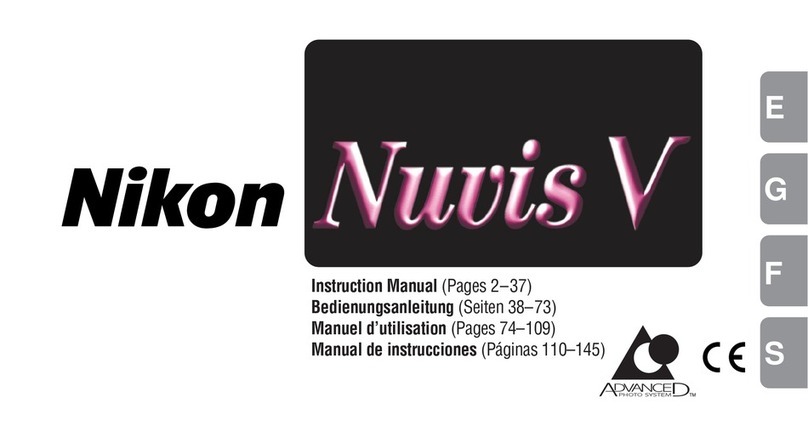TVCCD-302 Best.-Nr. 19.1100
TVCCD-304 Best.-Nr. 19.1110
TVCCD-306 Best.-Nr. 19.1120
TVCCD-308 Best.-Nr. 19.1130
TVCCD-302 • TVCCD-304 • TVCCD-306 • TVCCD-308
Telecamere mini in bianco/nero con obiettivo a fuoco fisso, in quattro
diverse versioni meccaniche:
TVCCD-302 Contenitore metallico orientabile, prese di collega-
mento standard
TVCCD-304 Contenitore metallico orientabile, obiettivo con aper-
tura a cruna d’ago, collegamento combi a 4 poli
TVCCD-306 Nascosta in un contenitore per segnalatore di movi-
mento, collegamento mediante fili
TVCCD-308 Ribaltabile e orientabile, nascosta in una cupola da
parete/soffitto, collegamento a vite con asole da
saldare.
Le telecamere sono ideali
-
mimetizzate o no, a seconda del modello
-
per i soliti scopi di sorveglianza, come per porte, come aiuto nei
parcheggi, controllo corridoi ed impianti di allarme per usi privati di
ogni genere. Le funzioni elettriche ed ottiche dei quattro modelli sono
identiche.
L’altissima sensibilità alla luce, combinata con un gain automatico
(AGC) e l’eccellente riproduzione dell’immagine sono le carat-
teristiche di queste telecamere. Non è richiesta nessuna regolazione,
il gain è previsto per luce scarsa (minimo di 1lux circa).
Per l’alimentazione si impiega una tensione continua di 12V; l’as-
sorbimento è di 150mA o meno. In linea di massima si può prendere
un qualsiasi alimentatore stabilizzato elettronicamente della potenza
richiesta; tuttavia si consiglia l’impiego dell’alimentatore di preci-
sione, realizzato specialmente per telecamere TVCCD: MONACOR
PS-12CCD.
1 I collegamenti
1.1 Modello TVCCD-302
1.1.1 Uscita video
Collegare la presa d’uscita cinch con uno o più monitor attraverso un
cavo HF 75Ω. Controllare la corretta chiusura con 75Ωsul monitor
oppure, nel caso di un collegamento in serie, sull’ultimo monitor.
1.1.2 Alimentazione
Collegare la presa DC con l’alimentatore 12V. Il positivo va collegato
con il contatto centrale.
1.2 Modello TVCCD-304
Per questa telecamera, l’intero collegamento avviene attraverso la
spina allegata a 4 poli.
Pin 1: +12V
Pin 2: Massa
Pin 3: Massa
Pin 4: Uscita video
1.2.1 Uscita video
Collegare i pin 4 (anima) e 3 (schermatura) con uno o più monitor
attraverso un cavo HF 75Ω. Controllare la corretta chiusura con 75Ω
sul monitor oppure, nel caso di un collegamento in serie, sull’ultimo
monitor.
1.2.2 Alimentazione
Collegare i pin 1 (+12V) e 2 (
-
12V) con l’alimentatore 12V.
1.3 Modello TVCCD-306
Dopo aver tolto la parte anteriore del contenitore, si vedono 3 fili di
collegamento:
nero: massa per alimentazione e segnale video
rosso: alimentazione +12V
bianco: uscita video
1.3.1 Uscita video
Collegare i fili bianco (anima) e nero (schermatura) con uno o più
monitor attraverso un cavo HF 75Ω. Controllare la corretta chiusura
con 75Ωsul monitor oppure, nel caso di un collegamento in serie,
sull’ultimo monitor.
1.3.2 Alimentazione
Collegare i fili rosso (+12V) e ancora nero (
-
12V) con l’alimentatore
12V.
1.4 Modello TVCCD-308
Sul lato inferiore si vedono i contatti a vite con asole da saldare.
1.4.1 Uscita video
Collegare le due viti di destra VIDEO OUT con un cavo HF 75Ωris-
pettando le indicazioni sulle viti: la vite destra è contrassegnata con
(+) per l’anima del cavo coassiale. La vite sinistra (
-
) serve per il col-
legamento della schermatura.
Collegare il cavo coassiale con uno o più monitor. Controllare la
corretta chiusura con 75Ωsul monitor oppure, nel caso di un colle-
gamento in serie, sull’ultimo monitor.
1.4.2 Alimentazione
Collegare le due viti di sinistra DC 12V con l’alimentatore 12V, quella
di destra (contrassegnata con +) con il positivo, l’altra (
-
) con il nega-
tivo dell’alimentatore.
2 Messa in funzione
Dopo aver provveduto all’alimentazione, le telecamere sono pronte
per l’uso. Grazie agli obiettivi a fuoco fisso non è richiesta o possibile
nessuna regolazione.
La struttura meccanica e l’orientamento delle telecamere sulla
zona da sorvegliare dipende dai vari modelli.
2.1 Modelli TVCCD-302 e TVCCD-304
Per i modelli TVCCD-302 e TVCCD-304, la staffa va montata contro
una parete o il soffitto. La telecamera si muove nei limiti della staffa.
2.2 Modello TVCCD-306
Il modello TVCCD-306 dev’essere fissato con molta cura contro la
parete, perché una volta montato non può più essere orientato.
2.3 Modello TVCCD-308
Il modello TVCCD-308 è basculabile e orientabile e pertanto può
essere montato quasi ovunque. Per la regolazione della telecamera
si gira la cupola a sinistra per poterla staccare. Quindi si può regolare
la posizione della telecamera e richiudere il contenitore.
3 Dati tecnici
Sensore ottico: . . . . . . . . . 1/3”, 4,4 x 3,3 mm
Sincronizzazione: . . . . . . . orizzontale 15625 Hz/ verticale 50Hz
Numero pixel: . . . . . . . . . . orizzontale 500 x verticale 582
Obiettivo: . . . . . . . . . . . . . 1:5/5 mm (65°)
Illuminazione minima: . . . . 1lux
Rapporto S/R: . . . . . . . . . > 42 dB
Uscita video: . . . . . . . . . . 1,0Vpp 75 Ω
Temperatura di esercizio: . da
-
10°C a +50°C.
Alimentazione: . . . . . . . . . 12 V , 150mA, esterna p. es.
MONACOR PS-12CCD, PS-362 ST
Dimensioni (lxh xp)
TVCCD-302/304: . . . . . 52 x 22 x 60mm
(senza staffa di montaggio)
TVCCD-306: . . . . . . . . . 55 x 73 x 32 mm
TVCCD-308: . . . . . . . . . 145 mm Ø x 75 mm
Peso
TVCCD-302/304: . . . . . 135gr
TVCCD-306: . . . . . . . . . 70 gr
TVCCD-308: . . . . . . . . . 235 gr
Dati forniti dal costruttore.
Con riserva di modifiche tecniche.
I Istruzioni per il montaggio
